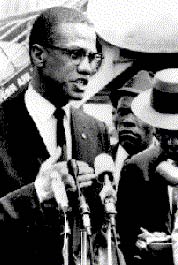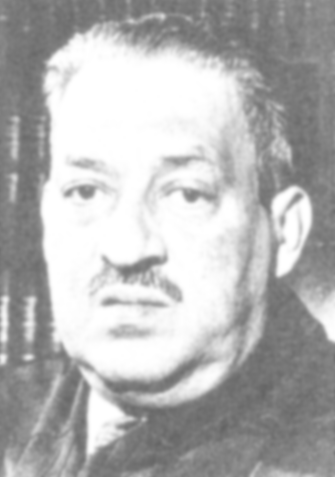 African Americans
African Americans
people of the U.S. whose ancestors came from sub-Saharan Africa; referred to historically as Negroes or colored people. In 1990 there were c.30 million African Americans in the U.S., forming 12% of the population. Africans have been in the Americas since the early 16th cent., when Spanish planters began to transport them from Africa to the West Indies as slaves. The first Africans brought to the North American mainland came to Virginia (1619) as indentured servants. With the success of tobacco planting, African
SLAVERY was legalized in Virginia and Maryland, becoming the foundation of the Southern agrarian economy. Although there were also slaves in the Northern colonies, the institution there did not become especially profitable. An African-American man, Crispus Attucks, died in the BOSTON MASSACRE (1770), and c.5,000 African Americans fought beside whites in the AMERICAN REVOLUTION. Slavery was gradually abolished in the North, but the U.S. Constitution (ratified 1788) protected the importation of slaves, and the invention of the COTTON GIN (1793) greatly increased the demand for them in the South. By 1830 there were more than 2 million African-American slaves in the U.S. Slave revolts were led by Nat TURNER and other ABOLITIONISTS. Although some slaves escaped north via the UNDERGROUND RAILROAD and a few purchased their freedom or were granted it under the terms of their master's will, the total slave population continued to grow. During the U.S. CIVIL WAR nearly 200,000 African Americans fought in the Union army-in segregated units led by white officers-and some 38,000 lost their lives. Pres. LINCOLN's EMANCIPATION PROCLAMATION (1863) and Union victory (1865) freed almost 4 million slaves. During RECONSTRUCTION (1865-77) 16 African Americans served in Congress, but these changes proved short-lived, and despite the social advances of some, extreme poverty became the lot of most African Americans under the SHARECROPPING system in the South. Resented by poor whites as economic competitors, they were often harassed and sometimes killed (see LYNCHING) by mobs or vigilante groups such as the KU KLUX KLAN. Tennessee was (1875) the first of many states to enact segregationist laws, and African Americans were also disenfranchised by such devices as the POLL TAX, the GRANDFATHER CLAUSE, and arbitrary literacy tests. Segregation received federal sanction when the Supreme Court ruled (1896) that it was legal if equal accommodations were provided for each race (see PLESSY V. FERGUSON). By the early 1900s many African Americans were seeking better conditions by migrating to northern cities, where they found work chiefly as domestics and unskilled laborers and lived in crowded, segregated GHETTOS. After World War I African Americans began to make some progress in business, the professions, and the arts, aided by the NATIONAL ASSOCIATION FOR THE ADVANCEMENT OF COLORED PEOPLE (founded 1910) and the National Urban League (1911) among others. Some northern ghettos, notably HARLEM, in New York City, became centers of a growing African-American middle class (see HARLEM RENAISSANCE). World War II stimulated a new wave of African-American migration to metropolitan areas, where many worked in defense plants. The postwar era brought the end of segregation in the armed services (1953), but economic progress remained slow. The CIVIL RIGHTS movement gained impetus when the Supreme Court ordered (1954) the elimination of segregation in schools, overturning the separate-but-equal rule (see BROWN V. BOARD OF EDUCATION). In 1955 the Montgomery (Ala.) bus boycott brought Dr. Martin Luther KING, Jr., to the forefront of the fight for equal rights, and growing white support led to the passage (1964, 1965) of federal civil-rights and voting rights bills. Nonetheless, many young African Americans were drawn in the 1960s to the separatism espoused by MALCOLM X, the BLACK MUSLIMS, and others. Tension and frustration produced riots in Rochester, N.Y. (1964), the Watts district of Los Angeles (1965), Detroit (1967), and, after Dr. King's assassination (1968), in more than 100 U.S. cities. The civil-rights movement of the 1970s increasingly became a struggle for economic advancement, and, in the 1980s, such measures as AFFIRMATIVE ACTION and school BUSING to achieve racial balance were tested in the courts with some success. The median income of African Americans remains far below that of whites, however, and unemployment is much higher (especially among youth), making full equality of opportunity a distant goal. In addition, lingering prejudice fosters interracial tension and other social problems that are often ignored by the larger society unless disturbances or riots result, as in Los Angeles following the acquittal (1992) of the police officers accused of brutality in the Rodney King case. See also biographies of individual African Americans.
/home.html

affirmative action
U.S. program to overcome the effects of past discrimination by giving some form of preferential treatment to ethnic minorities and women. The term is usually applied to those plans that set forth goals and time tables, required since the early 1970s of government contractors and universities receiving public funds. The Equal Employment Opportunities Act (1972) set up a commission to enforce such plans. The establishment of racial quotas in the name of affirmative action brought charges of so-called reverse discrimination in the late 1970s. The U.S. Supreme Court accepted such an argument in 1978 in the UNIVERSITY OF CALIFORNIA REGENTS V. BAKKE, but in 1979 the Court approved the use of quotas in a case involving voluntary affirmative-action programs in unions and private businesses. In the 1980s, under the Reagan administration and as a result of several Supreme Court decisions, the federal government's role in affirmative action was considerably diluted. The 1991 Civil Rights Act, however, restored some of the protections of the earlier laws.
civil rights
rights protecting a person against arbitrary or discriminatory treatment. The U.S.
CONSTITUTION guarantees freedom of religion, speech, and the PRESS, freedom of assembly, and rights to due process of law (e.g., HABEAS CORPUS) and equal protection under the law. After the CIVIL WAR, efforts to extend civil rights to African Americans were only in part realized by the 14th and 15th constitutional amendments. In the 20th cent. the African-American civil-rights movement, led by the NATIONAL ASSOCIATION FOR THE ADVANCEMENT OF COLORED PEOPLE, the National Urban League, Martin Luther KING, Jr., and others, was instrumental in securing legislation, notably the civil-rights acts of 1964 and 1968 and the voting rights act of 1965, prohibiting discrimination in public accommodations, schools, employment, and voting for reasons of color, race, religion, or national origin (see INTEGRATION). WOMAN SUFFRAGE was achieved in the U.S. under the 19th amendment (1920). Congress passed the Equal Rights Amendment, prohibiting discrimination on grounds of sex, in 1972, but the amendment failed to win ratification (see FEMINISM). The federal AMERICANS WITH DISABILITIES ACT, enacted in 1990, forbids discrimination against disabled persons. See also GAY RIGHTS MOVEMENT.
National Association for the Advancement of Colored People
(NAACP), organization of African Americans, with many white members, dedicated to ending racial inequality and segregation; est. 1910 with the merging of the Niagara Movement of W.E.B.
DU BOIS and a group of concerned whites. The organization grew quickly, at first directing its efforts to eradicating lynching; by the 1950s this goal was achieved. The 1954 Supreme Court school-desegregation decision (see INTEGRATION) followed a long effort by the NAACP Legal Defense and Education Fund. A consistent advocate of nonviolent protest, the NAACP has at times been accused of passivity by more militant groups. In 1991 it had a membership of 345,000.
slavery
institution whereby one person owns another and can exact from that person labor or other services, found among both primitive and advanced peoples. Greek slaves had some legal protection, but in the Roman Empire agricultural (estate) slavery gave landowners nearly absolute power over slaves, though manumission (emancipation) gave freedmen status in Rome's social system. Early Christians did not oppose slavery, but economic changes replaced the agricultural slave with the semifree
SERF in the Middle Ages. Islam also accepted slavery: eunuch slaves guarded the harem. In the 15th and 16th cent., European exploration of the African coasts led to a lucrative, brutal slave trade carried out by the British, French, Dutch, Spanish, and Portuguese. African slaves, in demand in the Americas, were brought to Virginia in 1619. The slave trade developed a triangular pattern: goods were transported from British ports to the west coast of Africa, where they were exchanged for slaves, who were taken to the New World and traded for agricultural staples for the return to England. The movement to abolish slavery for economic and humanitarian reasons began in the 18th cent. Britain outlawed (1807) the slave trade and abolished (1833) slavery in the British Empire. In the U.S., slavery had disappeared in the North by the early 19th cent. but had become integral to the South's plantation system; the ABOLITIONISTS regarded it as an unmitigated evil. Attempts to compromise on permitting slavery in the western territories-the MISSOURI COMPROMISE, the COMPROMISE OF 1850, and the KANSAS-NEBRASKA ACT-failed to resolve the issue. Sectional opposition over STATES' RIGHTS and the FUGITIVE SLAVE LAWS, the UNDERGROUND RAILROAD, the DRED SCOTT CASE, the WILMOT PROVISO, and John BROWN's raid on Harpers Ferry, Va., heightened tensions. The formation of the Republican party with its antislavery platform and the election of Abraham LINCOLN (1860) led to the secession of Southern states and the CIVIL WAR. Northern victory ended U.S. slavery, and Lincoln's EMANCIPATION PROCLAMATION (1863) freeing the slaves in secessionist states was followed by the 13th amendment to the CONSTITUTION. In the late 19th cent. international action against the remaining slave trade (especially that of Muslim powers) began. The LEAGUE OF NATIONS and later the UNITED NATIONS have continued efforts to abolish slavery and similar systems of forced labor, but millions still live or work in such conditions worldwide.
NEXT Home
 African Americans
African Americans